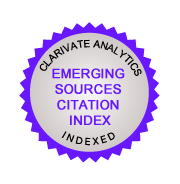CmapTools software implementation of college students to develop critical thinking
DOI:
https://doi.org/10.20548/innoeduca.2016.v2i1.1037Keywords:
TEACHING, HIGHER EDUCATION, SOFTWARE, COGNITIVE PROCESSING, INFORMATION TECHNOLOGYAbstract
Critical thinking in the vast majority of university students, is poor; therefore, teachers propose methods, usually using information technology and communication, such as educational software that will help students develop a critical judgment that allows them to face the challenges of professional life in which they must cope; it is therefore thought that application of CmapTools, as a technological tool to help students develop this type of higher thought. The research is explanatory, applied and quasi-experimental design. The control and experimental groups were randomly selected from pre-existing groups, each of them considered to students enrolled in a course during the first half of 2015 at Health Sciences Faculty – Private University Antonio Guillermo Urrelo. For the study was developed and validated a questionnaire answered by the students in the experimental and control groups before and after the implementation of the program containing activities with CmapTools. The results indicate that before the implementation of the program, most students never or hardly ever made use of the dimensions of critical thinking; but after its application it was noted that while in the control group were similar to the results obtained in the pretest to the experimental group 1,09% never used the dimensions of critical thinking; 24,12% sometimes did; 48,75% almost always did and 25,53% always used these dimensions. It’s concluded that the program activities using CmapTools, promotes the development of critical thinking in university studentsDownloads
Metrics
Publication Facts
Reviewer profiles N/A
Author statements
Indexed in
-
—
- Academic society
- N/A
- Publisher
- Universidad de Málaga
References
Acuña, L. (2013). Las Tic y su aporte a la educación. (U. C. Mogrovejo, Entrevistador). Perú.
Betancourth, S., Insuasti, K., & Riascos, N. (2012). Pensamiento crítico a través de la discusión socrática en estudiantes universitarios. Revista virtual Universidad Católica del Norte(35), 147-167.
Cañas. (2006). Del origen de los mapas conceptuales al desarrollo del CmapTools. (Eduteka, Entrevistador, & J. López, Editor).
Cañas, A. J., & Novak, J. D. (2007). Construyendo sobre nuevas ideas constructivistas y la herramienta Cmap Tools para crear un nuevo modelo para educación. Dialnet(8), 31 - 46.
Crisol, E., & Montejo, K. (2011). La importancia de presentar a futuros maestros herramientas tecnológicas como "CmapTools" para la mejora de su práctica docente en la escuela. Enseñanza y Teaching, 65 - 86.
El Peruano. (2013). Perú avanzó en el uso de las TICs para fines educativos. (E. Perú, Ed.). Perú avanzó en el uso de las TICs para fines educativos.
Espíndola, J. (1996). Métodos para fomentar el pensamiento crítico. En J. Espíndola, Reingeniería Educativa. México: ANUIES.
George, D., & Mallery, P. (2011). SPSS for windows step by step: A simple guide and reference 18.0 update, 11/E. Canadá: Pearson.
Huamán, M. C. (2012). Lineamientos para la redacción de un artículo. (U. S. Porres, Ed.) Recuperado de http//www.usmpvirtual.edu.pe/campus/_include/download/Artículo.pdf
Jaimes, K., & García, D. (2013). El mapa conceptual y el uso del Cmap Tools, conceptualización de sus aspectos didácticos. (U. J. Guadalajara, Ed.) Sinéctica(41), 2 -16.
La Tercera. (2011). Estudio dice que universitarios egresan sin pensamiento crítico. Educación.
Maquillón, J., Mirete, A., García, F., & Hernández, F. (2013). Valoración de las TIC por los estudiantes universitarios y su relación con los enfoques de aprendizaje. Revista de investigación educativa, 31(2), 537 - 554.
Marcone, S. (2012). Educción Pública y TICs en el Perú 2012 – 2021. Recuperado de http://es.slideshare.net/ircdirector/educacin-pblica-y-tics-en-el-per
Martínez, G., Pérez, A., Suero, M. I., & Pardo, P. J. (2010). Comparación del incremento de aprendizaje obtenido al utilizar mapas conceptuales y CmapTools en el estudio de dos temas diferentes, pero de nivel de contenido conceptual equivalente. En J. Sánchez, A. J. Cañas, & J. D. Novak (Ed.), Fourth international conference on concept mapping CMC 2010, 1, pp. 84 - 92. Viña del Mar.
Medina, M. (2006). Bilbioteca virtual. Recuperado de http://www.eumed.net/tesis/
Murga, M., Bautista, M. J., & Novo, M. (2011). Mapas conceptuales con CmapTools en la enseñanza universitaria de la educación ambiental. Estudio de caso en la UNED. Enseñanza de las ciencias, 29(1), 47 - 60.
Navarro, E. (2014). Contraste de hipótesis. Recuperado de http://es.slidshare.net/navarroenrique/gua-contraste-de-hiptesis-blog
Novak, J. (2007). Del origen de los mapas conceptuales al desarrollo del CmapTools. (Eduteka, Entrevistador, & J. C. López, Editor)
Ontoria, A. (2006). Mapas conceptuales. Una técnica para aprender (13a ed.). Madrid, España: Narcea S.A. .
Oviedo, H., & Campo-Arias, A. (2005). Aproximación al uso del coeficiente alfa de Cronbach. Revista Colombiana de Psiquiatría, 34(4), 572 - 580.
Pimienta, J. (2012). Estrategias de enseñanza - aprendizaje. México: Pearson.
Rodrigues, D., & Spadoti, R. (2011). Análisis de validez y confiabilidad de la versión adaptada para el portugués del cuestionario de sentido de coherencia de Antonovsky entre profesionales de enfermería. Rev. Latino-Am. Enfermagem, 19(1), 08 pantallas.
Tristán-López, A. (2008). Modificación al modelo de Lawshe para el dictamen cuantitativo de la validez de contenido de un instrumento objetivo. Avances en medición, 6, 37 - 48.
Valeiras, B. N. (2006). Las tecnologías de la información y la comunicación integradas en un modelo constructivista para la enseñanza de las ciencias. Tesis Doctoral, Universidad de Burgos, Burgos.
Downloads
Published
How to Cite
Issue
Section
License
All contents published by Innoeduca. International Journal of Technology and Educational Innovation are subject to Creative Commons Attribution-Nocomercial-NoDerivatives 4.0 International License, whose complete text can be consulted at https://creativecommons.org/licenses/by-nc-nd/4.0/legalcode. Thus, copying, distribution, public communication, derivative works and commercial use of content are permitted as of the aforementioned issue provided that the source and the author of the text are cited.
It is the responsibility of the authors to obtain the necessary permits for images that are subject to copyright.

This work is licensed under a Creative Commons Attribution-NonCommercial-NoDerivatives 4.0 International License.












242.png)








